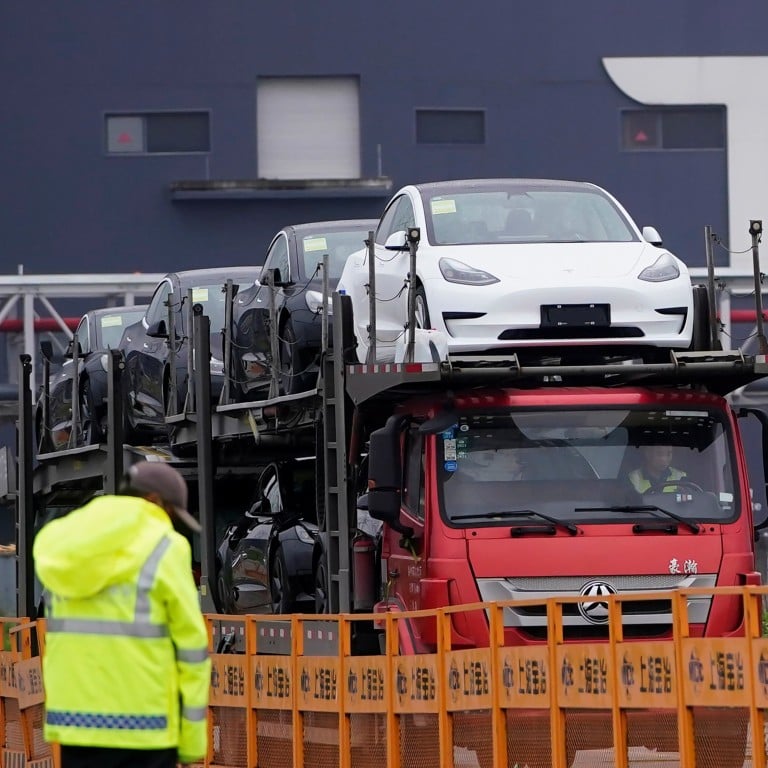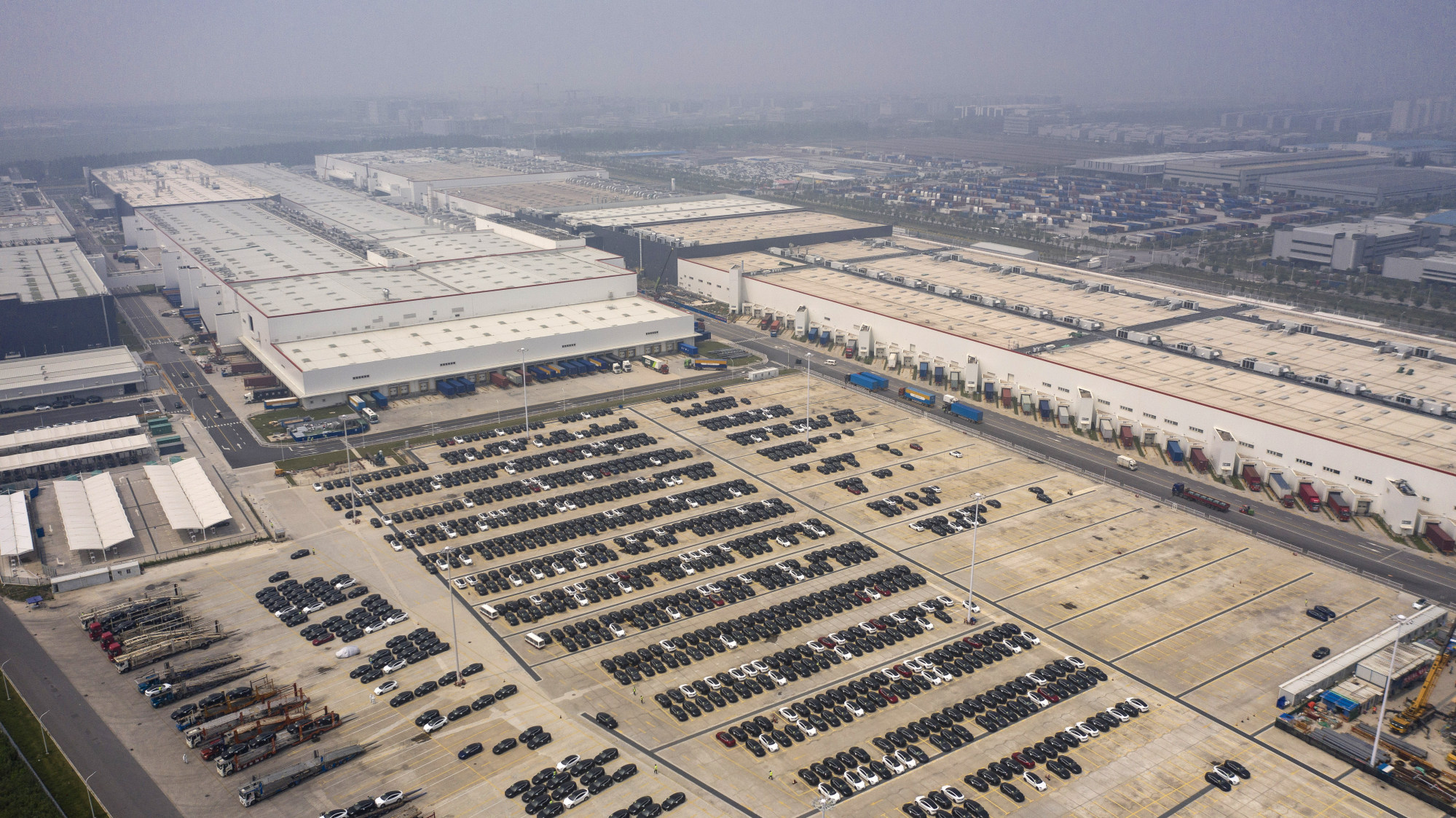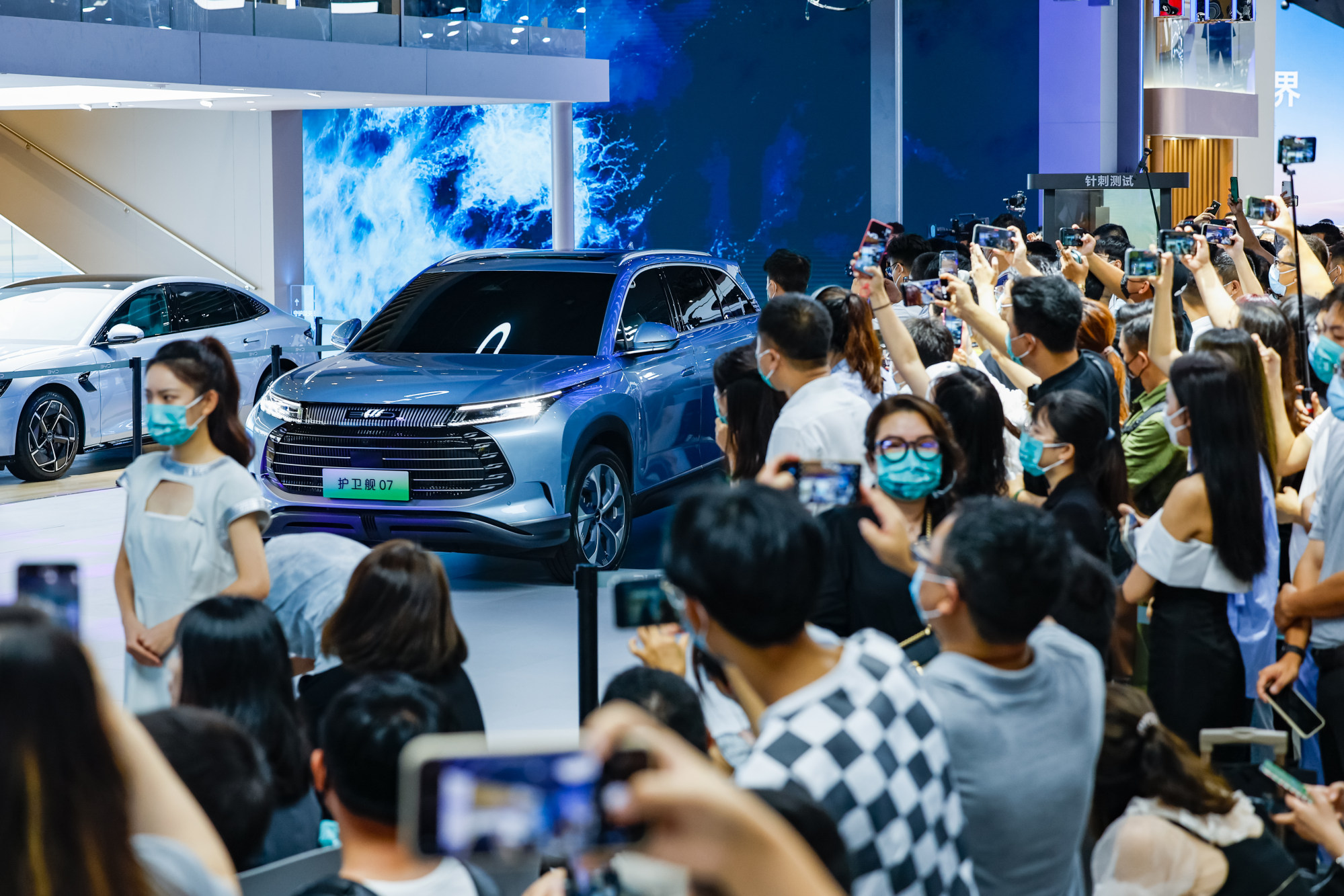
Tesla’s Shanghai factory nearly triples output, as China sales total beats Nio, Xpeng and Li Auto put together
- The American carmaker’s Shanghai facility produced 76,965 vehicles in August, 173 per cent more than a month earlier, when upgrades were in progress
- Total deliveries of new-energy vehicles rose 8.8 per cent to 529,000 units in China in August, according to CPCA data
The American company’s massive Shanghai facility produced 76,965 vehicles in August, 173 per cent more than a month earlier and just under its highest ever monthly total of 78,906 in June.
The facility in Shanghai’s Lingang free-trade zone, officially called Gigafactory 3, delivered 34,502 Model 3 and Model Y vehicles to mainland customers last month, according to data from the China Passenger Car Association (CPCA). That is more than quadruple July’s total of 8,461 while factory upgrades were in progress.

Tesla also exported 42,463 cars to overseas markets in August.
“Tesla is clawing back lost ground,” said Tian Maowei, a sales manager at Yiyou Auto Service in Shanghai. “After it expanded its capacity, the Shanghai plant is powering ahead with production in August, nearing its record.”
The additional capacity should help the US carmaker make up for ground it lost when a two-month citywide Covid-19 lockdown forced the Shanghai factory to halt production between March 28 and April 18, slashing production volume by 70,000 cars.
Tesla chief executive Elon Musk wrote in a post on the Weibo microblog site on August 18 that more of the company’s newly built cars would be exported than delivered to domestic buyers during the first half of the current quarter, with the distribution shifting towards local customers in the second half.

Total deliveries of new-energy vehicles rose 8.8 per cent to 529,000 units in China in August, according to CPCA data.
Most of the BYD’s models are priced between 100,000 yuan (US$14,371) and 200,000 yuan, about half the price of Tesla’s Model 3s and Model Ys.
BYD recorded sales of 173,977 units in August, up 157 per cent year over year.

